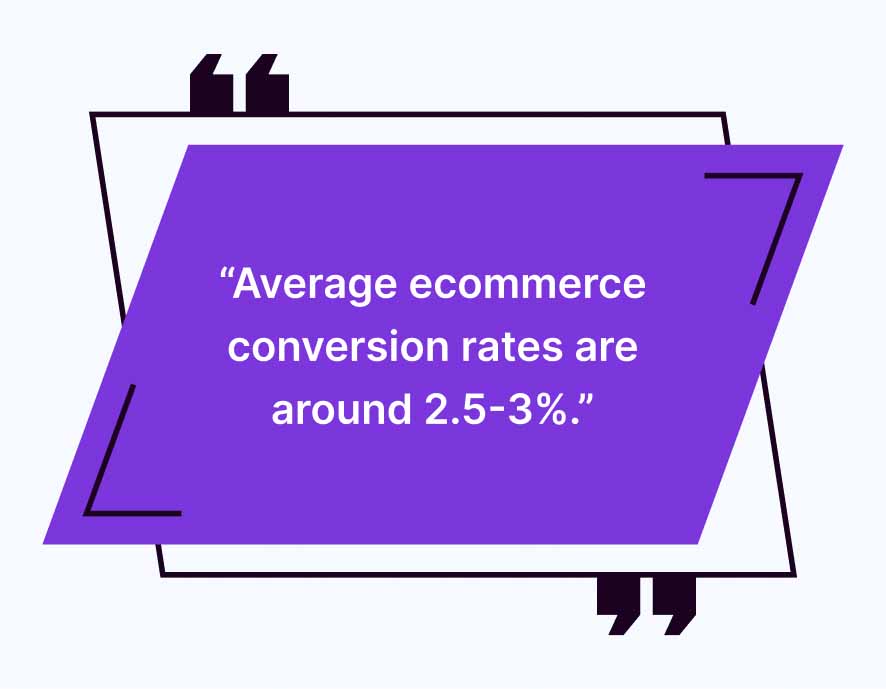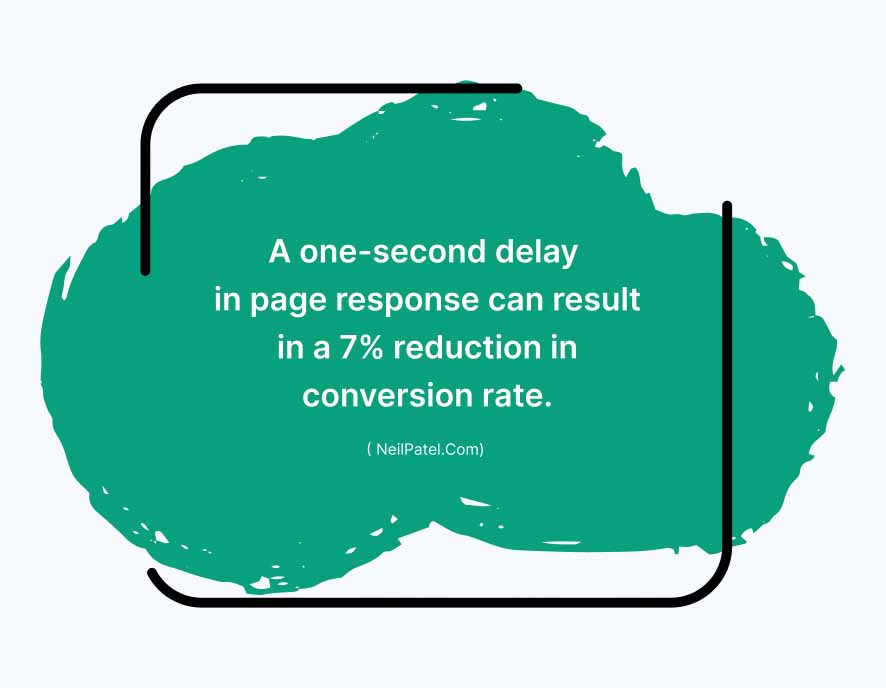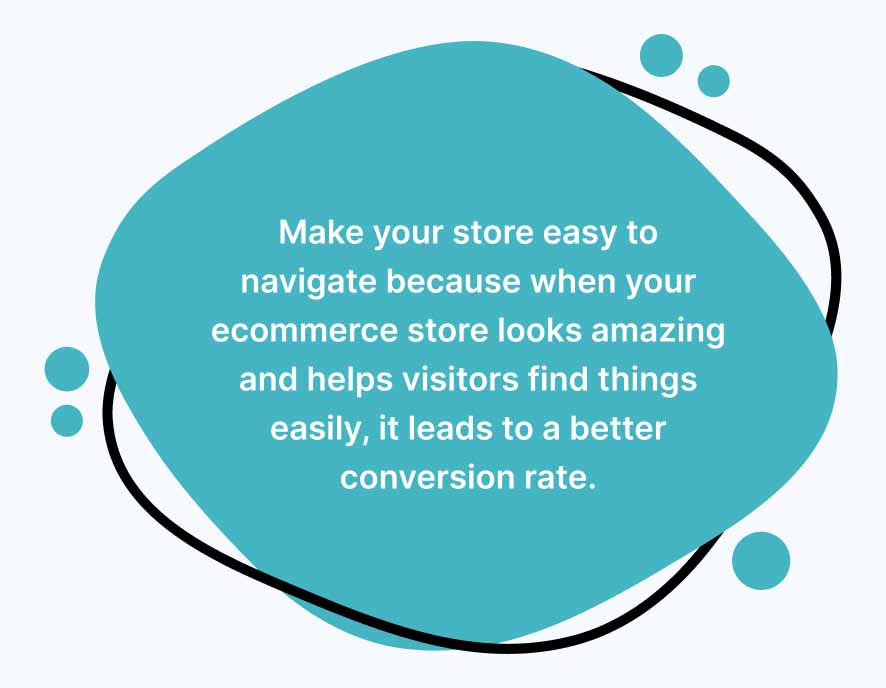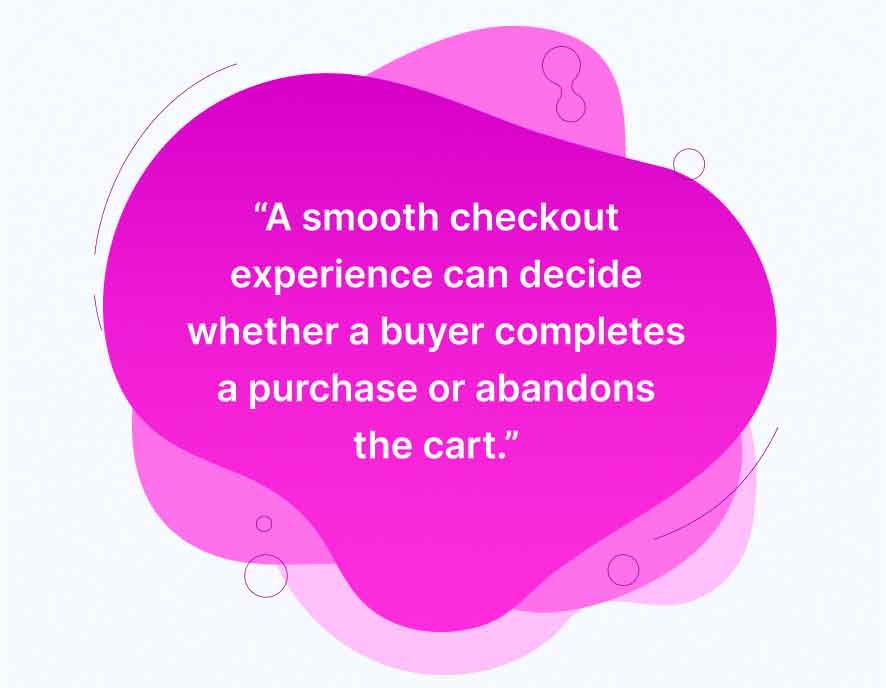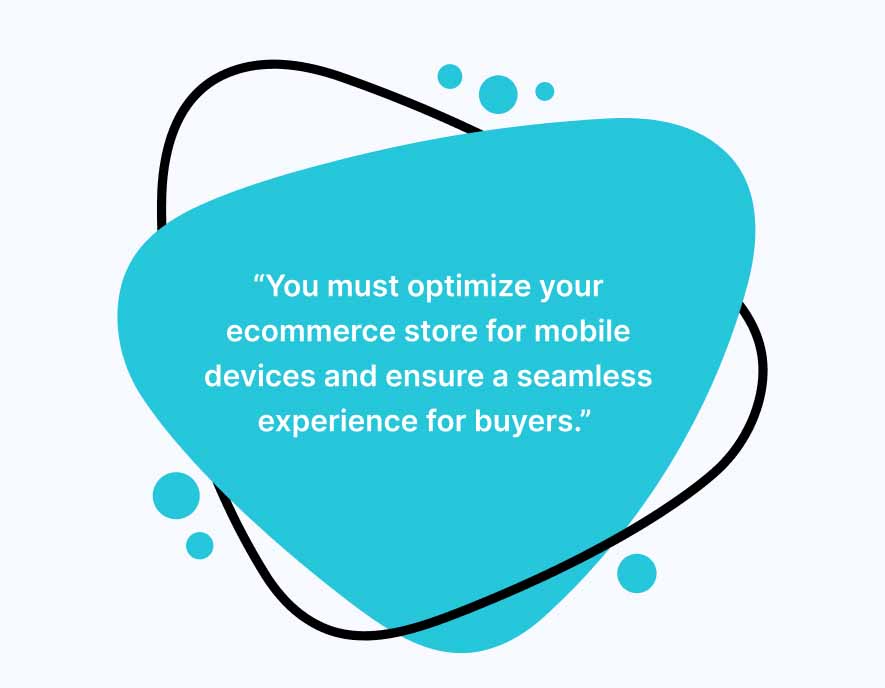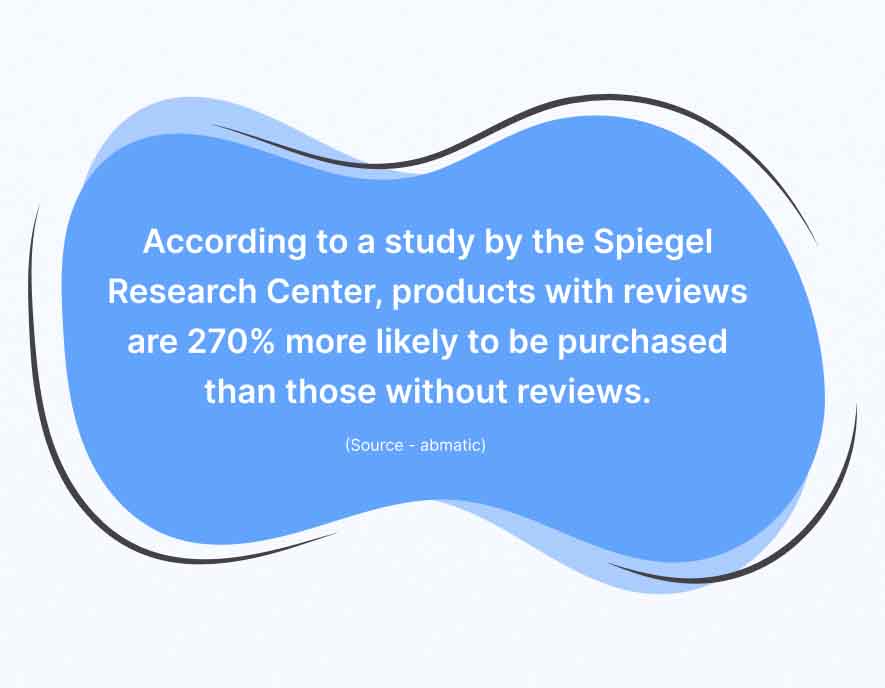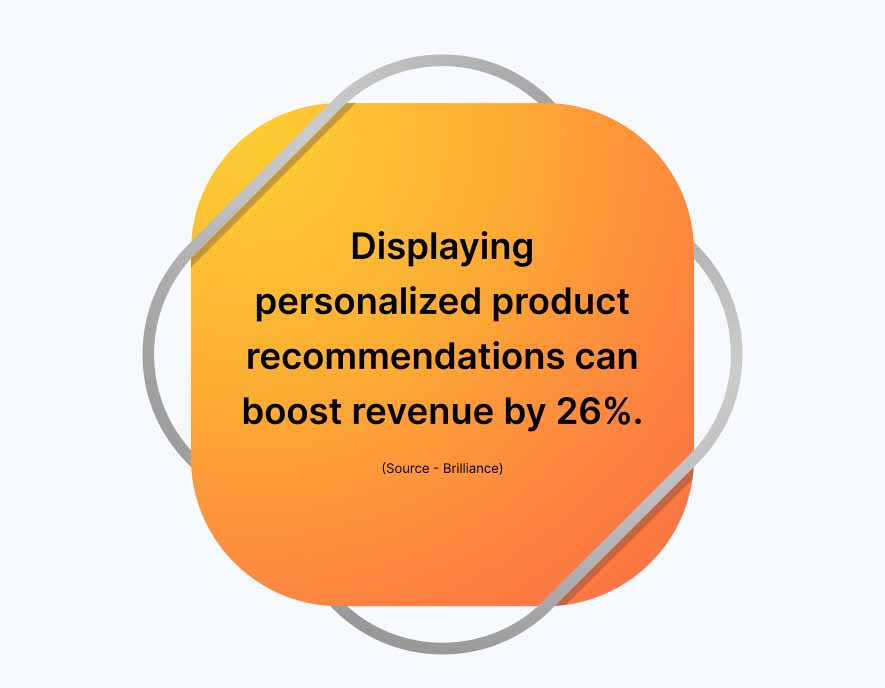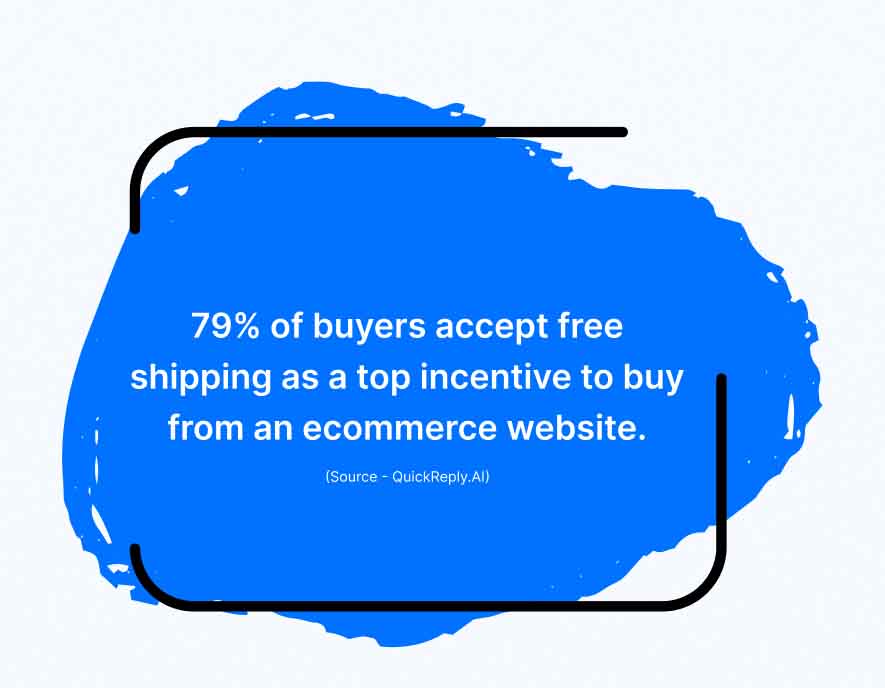Getting millions of visitors to your e-commerce website every month won’t matter much if you’re not converting most of them. After all, the real success of an online store lies in converting a good percentage of its visitors into paying customers. This ensures more revenue and more profit for the business.
However, it’s never easy to encourage customers to buy from your ecommerce website. Why? Because buyers today have so many options to explore. They have choices galore. All this adds to the huge competition in the market.
That’s why, you must be wondering, how to increase your ecommerce conversion rate!
Well, it’s not easy and you need to understand two foremost challenges –
- The vast majority of a site’s visitors tend to leave without buying anything at all.
- The average conversion rate for e-commerce stores stands between 2 to 3%.
This means you should use the right strategies and tactics to boost conversion rates. More importantly, you need to re-think and re-plan if you want to survive and thrive in the ecommerce industry.
All is not lost if you’re ready to step up because there are successful online stores that have a ten-times conversion rate to the industry standard. So, you should stop and analyze what others are doing and then enter the market with a different set of strategies.
In this blog, we will discuss what conversion is in ecommerce, how to calculate it, and how to increase it.
Before moving further, let’s get started with understanding what the conversion rate in ecommerce is…
What is Conversion in Ecommerce?
Conversion in e-commerce refers to a specific action you want visitors to take on your website. In most cases, this “specific action” is making a purchase, but sometimes it could also mean other things as well. For example, conversion may also refer to signing up for a newsletter, downloading an e-book, filling out a contact form, or any other action your ecommerce website targets as a goal.
Let’s understand with a real-life example. Suppose you run an online store selling mobiles and smartphones. In this case, a successful conversion will happen when a visitor browses through your products, selects a smartphone, adds it to the cart, moves to the checkout, and ultimately buys it by filling in payment and shipping details.
For your e-commerce website, the conversion rate would represent the percentage of visitors who purchase out of the total number who visited the site.
In simple terms, conversion often aligns with the specific goals of the website or business. If a business is into subscription-based service, its conversion might also happen when someone signs up for a free trial and goes on to become a paying customer later on.
In essence, conversion represents the effectiveness of an ecommerce website in turning visitors into customers. A business must analyze and optimize the conversion rate as it has a direct impact on its overall performance, profit, and revenue.
What is a Good Conversion Rate for Ecommerce?
The average conversion rate for e-commerce websites stands between 2 to 3%, but this can fluctuate widely.
Multiple factors can impact the conversion rate of an ecommerce website and that’s why it varies. For your online store, the conversion rate would depend on the type of industry it operates in, product type, target audience, and the kind of marketing efforts it deploys.
While the average rate hangs around the 3% mark, some businesses with niche products or highly targeted audiences might achieve higher conversion rates as well. On the other hand, those with a broad range of products might have to contend with lower rates.
To understand what a good conversion rate for ecommerce is, you should also understand –
- A higher conversion rate is possible when you have a well-targeted audience
- A lower conversion rate happens when you have a less-defined audience
- Your store’s usability, design, and functionality can also impact the conversion rate
- Optimized websites tend to convert better
How to Calculate Conversion Rate in Ecommerce?
Calculating the conversion rate in e-commerce is very straightforward. The formula is very simple and you just need to divide the number of conversions by the total visitors, and then multiply by 100 to get the conversion rate in percentage.
Here’s the formula to calculate the conversion rate –
Conversion Rate = (Number of Conversions / Total Number of Visitors) x 100
To understand the use of the formula, let’s understand with a real-life example –
Suppose your e-commerce website received 50,000 visitors last month. Out of those visitors, 1500 made a purchase.
Conversion Rate = (1500 / 50,000) * 100
Conversion Rate = 0.0 * 100
Conversion Rate = 3%
In this case, your ecommerce website has a conversion rate of 3% for that particular month. In Simple terms, out of every 100 visitors to your website, 3 converted into customers.
Here, the conversion rate is considered for sales. However, it could also be calculated for other specific goals as well. If your conversion is something other than sales, you’d take those actions into account and insert them into the formula accordingly.
How to Increase Ecommerce Conversion Rate – Key Stats
Increasing the ecommerce conversion rate is always a top priority for businesses. Some businesses understand the ways to an improved conversion rate whereas others do not. If you follow the industry standards and serve customers well, you can drive the conversion rate.
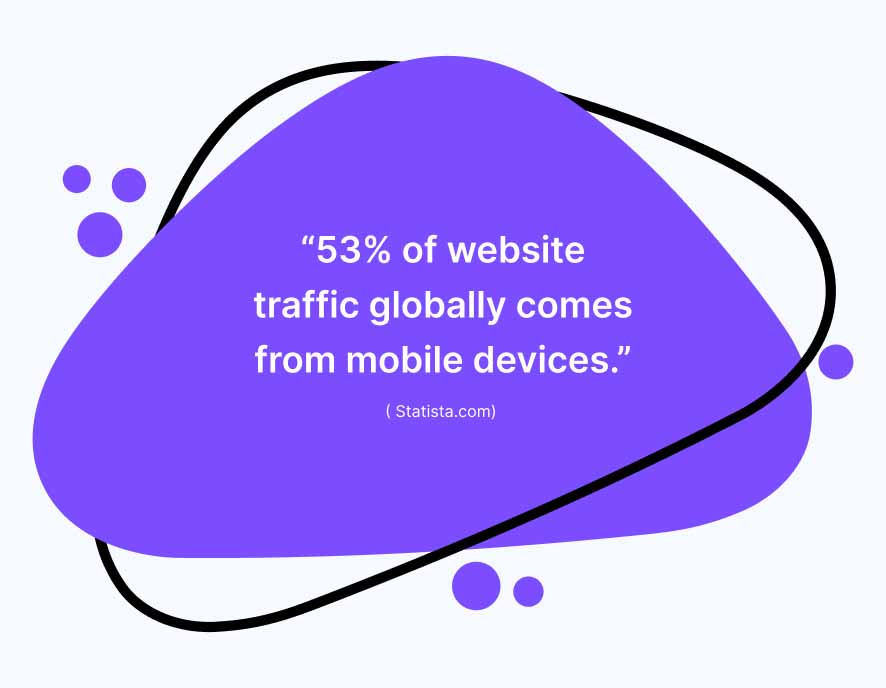
Here are the stats showing things about ecommerce conversion rate –
- 53% of website traffic globally comes from mobile devices. ( Statista.com)
- A one-second delay in page response can result in a 7% reduction in conversion rate. ( Forbes)
- According to a study by the Spiegel Research Center, products with reviews are 270% more likely to be purchased than those without reviews. (Source)
- Displaying personalized product recommendations can boost revenue by 26%. (Brilliance)
- 79% of buyers accept free shipping as a top incentive to buy from an ecommerce website. ( QuickReply.AI)
Ecommerce Conversion Optimization Strategies For Your Business
When you run an e-commerce business, a lower conversion rate is among the last things you want. Even if your conversion rate is lower compared to the industry standard, you should not worry at all and rather focus on improving your CRO. There are some really useful tactics and strategies you can use to achieve a desired ecommerce conversion optimization rate.
Here are some effective ecommerce conversion optimization strategies for your business –
1. Analyze your website for user experience
A complete website audit is perhaps the first step when you want to improve the conversion rate of your ecommerce business. The focus should be on ensuring a great experience for visitors when they land on your site. Buyers should easily get what they search for, should be able to effortlessly navigate through pages and sections, and feel engaged. If the users are getting good experiences on your website, it will contribute to your ecommerce conversion optimization efforts.
Here are key steps to analyze your website for user experience –
- Focus on simplifying the user experience and design your website pages with important information easily available to users.
- Display your specific call-to-action clearly so that visitors don’t feel hassled in making a purchase.
- Use high-quality content, product images, and descriptions that clearly define and present your offers and keep visitors engaged.
- Make use of graphics and videos so that buyers clearly understand every aspect of the product.
2. Make your store easy to navigate
When your ecommerce store looks amazing and helps visitors find things easily, you can be assured of a better conversion rate. After all, visitors feel frustrated when they have to make an effort to find products or navigate through your store.
The website navigation is way more important a CRO element than you could imagine. You should understand that navigation is among the first things visitors notice or use, so it can make or break the deal for your business.
Here are a few tips to make your online store easy to navigate –
- Consider adding banners on your website to show popular products and services so that your specialty is known to customers quickly.
- Create filters so users can narrow the search based on different criteria and find the right product easily.
- Optimize search by using auto-complete input and by using keywords.
- Monitor heatmaps to know how and where users engage and interact the most with your site, and use the info for further improvements to those areas.
3. Streamline the checkout process
Streamlining the checkout process is a key aspect of optimizing ecommerce conversion rates. A smooth checkout experience can decide whether a buyer completes a purchase or abandons the cart. When the checkout process is streamlined, it helps reduce friction for buyers and also increases their overall experience with the store. This is how your ecommerce store simplifies the user journey and boosts the chances of buyers completing their purchase.
Here are the key steps to streamline the checkout process –
- Avoid lengthy sign-up steps and processes for visitors and offer them a guest checkout option.
- Make sure buyers can transact or make a purchase without having to create an account with your store.
- Minimize form fields so that visitors avoid long forms and just use the essential information to make the purchase.
- Consider having a one-page checkout process with a clear progress bar as an indicator so that visitors feel easy through the checkout process.
- Make sure the checkout process is optimized for various screen sizes.
4. Prioritize mobile optimization
Gone are the days when the desktop was the most preferred way of shopping. More buyers now use smartphones for online shopping. This trend will keep on rising, so you should consider aligning with the changing trends. The key is to optimize your store for mobile devices and ensure a seamless experience for buyers.
With mobile users growing in numbers, you must prioritize mobile optimization to deliver a great experience for new-age shoppers. When you prioritize mobile optimization, you take the right step towards boosting engagement and when that happens, the bounce rates go down.
Here are the key things to consider for mobile optimization –
- Focus on a responsible design that adapts to various screen sizes and devices.
- Ensure fast loading times by optimizing the mobile page speed of your website.
- Minimize scrolling, get an intuitive structure, and deploy easy-to-tap buttons to achieve user-friendly navigation.
- Optimize the content and checkout process for mobile screens.
5. Leverage customer reviews and testimonials
Ecommerce stores must build trust and loyalty with their potential customers to expect purchases from them. The more trustworthy your store becomes, the more customers will buy from it. This is where customer reviews and testimonials can help.
Reviews and testimonials can serve as unbiased opinions for customers and influence their buying decisions. Moreover, they are very helpful in offering insights into product quality and usability. Strategically displaying them can help sway hesitant buyers and boost your conversion rate.
Here are tips for using customer reviews and testimonials –
- Display customer reviews prominently near the product pages so that users can see them.
- Use all types of reviews be they text-based, star ratings, images, or videos to impress your potential buyers.
- Respond to reviews, give your honest feedback, and also encourage customers to leave reviews.
- Use social media to highlight the best of your reviews and testimonials.
6. Offer personalized product recommendations
Customers love personalized product recommendations when they shop on your ecommerce website. It presents better offers and products in front of them, therefore boosting the chances of higher conversion rates. The key to personalized recommendation is to tailor your product suggestions to individual customer’s purchase history, behavior, and preferences.
More so, personalized recommendations ensure a more relevant and engaging experience for buyers and guide them toward the kind of products they might be interested in. More so, online stores can increase cross-selling and upselling opportunities by catering to shopper’s browsing and purchase history.
Here are strategies for ensuring personalized recommendations to buyers –
- Collect and analyze customer data related to past purchases, demographic information, etc, and use them for personalized services.
- Use the relevant “recommendation algorithms” to suggest products based on user preferences and behavior.
- Segment your audience into different groups and then tailor products to each one’s interests.
- Focus on displaying dynamic content in tune with the current session or behavior of the user.
7. Give free shipping and returns
Offering free shipping and hassle-free returns has always been a very effective strategy to boost ecommerce conversion rates. Their use can motivate buyers to purchase more from your website without worrying about unexpected costs. More so, they also contribute to a positive shopping experience.
When you offer free shipping, it serves as an incentive for customers to complete the purchase and reduces your website’s cart abandonment rate. Free shipping and smooth return policies can give your brand a much-needed competitive advantage.
Here are strategies for implementing free shipping and returns –
- Set a minimum order value for free shipping and keep this value to a level that encourages customers to add more items to their cart.
- Highlight free shipping to buyers and it makes shopping more appealing for them.
- Create a sense of urgency with a free shipping offer.
- Put in place a completely transparent return policy that is easy to understand for customers.
8. Follow an omnichannel approach
Implementing an omnichannel approach is a key aspect of ecommerce conversion optimization strategies. It helps you provide your customers with a seamless and integrated shopping experience across channels. This approach is essential when you look to offer a consistent and unified experience across multiple touchpoints, such as websites, social media, apps, email, and physical stores.
Here are a few benefits of adopting an omnichannel approach –
- Your customers can seamlessly transition between channels which can increase engagement and chances of conversion.
- You can identify the touchpoints where customers are likely to face issues and then optimize them for a smooth journey.
- You will get a comprehensive view of customer behavior and preferences, and use the data for offering personalized experiences.
9. Deploy AI-powered chatbots
More ecommerce websites use AI chatbots than earlier. They understand how these bots are very effective in providing personalized assistance and therefore improving customer engagement. You can use them to streamline the shopping experience as well.
With a chatbot, you can address customer queries quickly and also guide them through the purchasing process. More so, the bot can help with understanding customer preferences and behavior, and the data can be used for product recommendations and personalized services.
Here are a few more ways chatbots can help your online store –
- You can integrate a chatbot across various platforms and ensure a unified accessible channel for your customers.
- A chatbot can assist in order tracking, process returns, and do plenty of other tasks that human agents do.
- Chatbots can suggest products or items to customers and then help generate additional sales opportunities for the business.
Ecommerce Conversion Best Practices
Using the right strategies can help ecommerce websites further optimize their conversion rates. There are some useful steps and tips you can follow as best practices to increase conversion on your online store. They are –
- Provide exceptional customer service and focus on offering multiple support channels so customers can reach you from anywhere and you can provide them quick answers.
- Run personalized and targeted email campaigns to engage potential customers and also use remarketing strategies to re-engage those visitors who did not complete a purchase.
- Take steps to build trust for customers by displaying trust badges, and deploying data security measures as these could be vital for conversions.
- Add live chat support to provide instant help during purchase and ensure real-time assistance as these steps resolve customer queries and boost their confidence in the purchase.
- Let your customers purchase directly through social media platforms to engage better with your potential customers.
- Use interactive and engaging content and videos throughout your ecommerce website as they will show your products more dynamically and influence purchasing decisions.
- Implement well-chalked-out loyalty programs and rewards so that customers feel encouraged to repeat purchases and you build brand loyalty.
- Run targeted email campaigns based on customer behavior and browsing history as these steps could drive engagement.
Increase Your Ecommerce Conversion Rate with REVE’s Tools
Converting website visitors into paying customers is always a top priority for ecommerce enterprises. This task however is easier said than done as it involves a systematic approach and use of the right strategies.
At REVE Chat, we understand how using the right tools is key to boosting conversion rates. That’s why we bring a wide range of customer engagement tools for your business.
Our AI-powered chatbot can help you automate tasks across sales, marketing, and support. These bots can prove very helpful in offering quick responses to customers as well.
We also have video chat software, co-browsing software, and a ticketing system for better engagement.
You can also add the chatbot with our powerful live chat software and provide hybrid support.
Final Thoughts
A successful ecommerce business converts most of its website visitors into paying customers. It knows the tricks and trips of the trade, so converts a good percentage of its customers.
Not all online stores however enjoy a good conversion rate because customers today have plenty of options and the competition has intensified a lot.
The right way is to use the best tools and technology and drive the conversion rate of your online store.
You can sign up with us, check our engagement tools, and see how they could be a great value addition to your conversion optimization effort.


